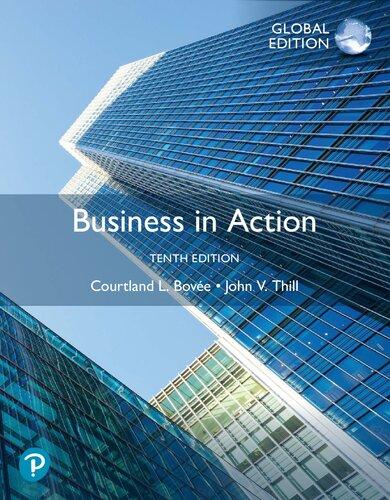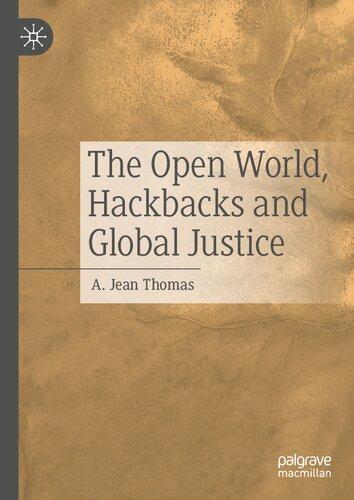ACKNOWLEDGEMENTS
The authors would like to thank those people who have played a key role in the production of this text. Their families and friends were always patient and supportive, especially when deadlines were imminent. Stephen Chapman wishes to acknowledge his father, Jack, late mother, Lorna, mother-in-law, Thelo, and late father-in-law, Rae, who have encouraged him as a student, educator and writer for many years — and special thanks to Wendy and Max. Rosalinda Gallina would like to express her appreciation to her husband, Michael, and precious daughter, Alessia, who supported and encouraged her in spite of all the time it took away from them. She would also like to sincerely thank her parents, her sister, Isabella, and her brother-in-law, John, for their never-ending help. Finally, she would like to acknowledge Lucy and the team at Jacaranda for all their assistance. Natalie Devenish would like to acknowledge the support of her husband, Mark, and children James, Georgia and William. Natalie would like to dedicate her contribution to previous editions to her late father, Graham Kennedy.
The authors and publisher would like to thank the following copyright holders, organisations and individuals for their assistance and for permission to reproduce copyright material in this book.
Images
• 2Stepdance: 345/Rosalinda Gallina • ABC: 342 • Alamy Stock Photo: 133/©Kristoffer Tripplaar; 298/Chronicle; 298/© Alex Segre • Ali Kitinas: 5 • Australian Bureau of Statistics: 28, 352 • Bella Tipping: 17 • brokernews: 149 • Creative Commons: 87, 88; 150/Market share 4 big banks The Conversation Harry Scheule; 351, 400/© Commonwealth of Australia 2017.; 363/ Based on information taken from Australian and New Zealand Standard Industrial Classification; 380/ACCC • Deposit Photos: 125 • Fairtrade Australia: 284 • Getty Images: 83/© 97; 225/ Brand X Pictures / Shutterstock; 420/Blend Images • Getty Images Australia: 39/Eric Taylor/ Bloomberg; 105/Brendon OHagan/Bloomberg; 151/Kelly Sullivan/Fortune; 192/L. Busacca/ WireImage for BWR Public Relations; 284/Kaushik Roy/India Today Group • iStockphoto: 83, 223, 236, 303/royalty free - extended use; 236/Jacob Wackerhausen • John Wiley & Sons Australia: 360/Photo taken by Renee Bryon • Jon Ellis: 217/Investorist • Kotter International: 299/Photo by Caroline Kotter. Reproduced with permission of Professor John Kotter • McDonalds: 260 • Newspix: 54/Katrina Tepper; 189/Peter Brennan; 262/Michael Potter; 283/Nikki Davis Jones; 285/Steve Tanner; 326/Nathan Edwards; 354/News Ltd; 360/Frank Violi; 395/Nicole Garmston • Office of the NSW Small Business Commissioner : 351 • Out of Copyright: 24, 34, 182; 88, 88/Coles Myer Ltd • Packaging Council of Aus: 228 • Phillis Chan: 354/Ben Chaung • Photodisc: 447 • Polasports: 220/Trishala Prasad • Public Domain: 170 • Robert Blackburn/Circus OZ: 324 • Rosalinda Gallina: 23/Mario Moniaci; 91/Amanda Cavallaro; 230/Victoria Mecluri; 241, 317, 317, 318, 320; 357, 360, 398, 407, 436, 441/ • Shoes of Prey: 327 • Shutterstock: 4/TonyNg; 4/Tooykrub; 6/Dmytro Zinkevych; 9/Jaaak; 9/Pressmaster; 11/Spotmatik Ltd; 12/c Jan Hopgood, 2010.; 14/GrandeDuc; 15, 119, 179/ JStone; 16, 22, 39, 66, 72, 78, 79, 82, 402; 25/Padmayogini; 29/Holli; 29, 42, 67, 67, 84, 100, 104, 141, 183, 264, 297, 425/TK Kurikawa; 30/Foxy burrow; 201(c), 30/Poznyakov; 34/Sunflowerey; 35/Reproduced with permission of Myer Pty Ltd; 36/Alexander Mak; 39, 39, 39, 101, 149/Nils Versemann; 39, 42/Gordon Bell; 40/iQoncept; 42/Robert Cumming; 42/Budimir Jevtic; 46/Christopher Penler ; 46, 341/mangostock; 48/panitanphoto; 52/Family Business; 53/Photographee.eu; 54/Stuart Miles; 56/VGstockstudio; 56, 236, 432, 445/goodluz; 57, 58, 145, 174, 191, 365, 371, 413/Rawpixel.com; 62/Phonlamai Photo; 63/Ociacia; 66/ TonyV3112; 68/Tom Wang; 71/Albert Karimov; 72, 76/George Rudy; 76/Martial Red; 87/Alberto Masnovo; 92/Alastair Wallace; 94/frantic00; 98/Diabluses; 107/JLRphotography; 118/Andrei_R; 120/baranq; 120/Rudie Strummer; 121/Martin Good; 126/Pormezz; 128, 128, 132, 160, 306, 445/Monkey Business Images; 129/Andrey_Popov; 134/UfaBizPhoto; 135/GongTo; 137/Gil C; 138/wk1003mike; 144/pisaphotography; 148/Denis Demidenko; 153/Rob Bayer; 155, 388/Stokkete; 155/Juergen_Wallstabe; 156/ricochet64; 157/Deymos.HR; 163/ESB Professional; 165/stockfour; 168/sculpies; 171, 183/Everett Collection; 176/Cergios; 181/Olga Kovalenko; 184, 329/Robert Kneschke; 185/stocklight; 186/Alex Brylov; 187/Bikeriderlondon; 190/Monkey Business; 190/Petr Vaclavek; 194/Olena Yakobchuk; 195/Zerbor; 199/MSSA; 203/Anton Veselov; 203/Bukhanovskyy; 204/ymgerman; 210/racorn; 212/Altin Osmanaj; 213/Neale Cousland; 214/Palto; 214 (top left)/Avatar_023; 214 (bottom left)/plantic; 214 (top right)/
xieyuliang; 214 (bottom right)/Wright Studio; 215/JuliusKielaitis; 216, 236/SpeedKingz; 218/ Amarante Ayo; 221/Dean Drobot; 201(a), 224/Diego Cervo; 227/Iamnee ; 229/Cineberg; 231/ Liliya Kulianionak; 235/create jobs 51; 236, 431/michaeljung; 236/clearviewstock; 236/LDprod; 236/Dmitry Kalinovsky; 236/Passion Images; 56, 236, 432, 445/Goodluz; 250/ChristianChan; 255/StockLite; 255/Intrepix; 257, 307/Iakov Filimonov; 260, 262, 342/wavebreakmedia; 201(b), 266/Tyler Olson; 267/alexjey; 268, 434/fizkes; 272/Stuart Elflett; 273/Yuriy Rudyy; 277/YAKOBCHUK VIACHESLAV; 279/Elnur; 279/Raais Mohd Azhar; 282/wideweb; 286, 383/Africa Studio; 287/Zakharchenko Anna; 288/HomeArt; 290/Pavel Chagochkin; 292/Cartoonresource; 292/Lenscap Photography; 295/Chris Parypa Photography; 295/Phil Stafford; 296/OlegDoroshin; 297, 440/Phillip Minnis; 298/Bluskystudio; 300/Nattee Sriyant; 308/MediaGroup_BestForYou; 320/viki2win; 321/Lee Prince; 323/Nerthuz; 333, 333/MIND AND I; 338/DGLimages; 338, 369/mavo; 350/Adwo; 353/Eugenio Marongiu; 364/OPOLJA; 57, 58, 145, 174, 191, 365, 371, 413/Rawpixel.com ; 366/ymgerman; 367/sibgat; 373/egilshay; 374/Ribah; 378/alexmillos; 379/roibu; 384/Robyn Mackenzie / 123RF; 385/ALPA PROD; 389/ docstockmedia; 395/RAGMA IMAGES ; 396/Dragon Images; 397/g-stockstudio; 399/Andresr; 408/CreatiVector; 412/Ivanko80; 423/ra2studio; 424/PathDoc; 29, 42, 67, 67, 84, 100, 104, 141, 183, 264, 297, 425/TK Kurikawa ; 433/Art_Photo; 440/dotshock; 440/Ragne Kabanova; 440/Kekyalyaynen; 440/Zurijeta; 445/weedezign; 445/Alexander Kirch; 445/Chesky; 447/Ammit Jack • Stephen Chapman: 339/© Practice Manager 24/7; 358/© Sunrise Mobile Cafe; 360 • The Conversation website: Deborah Ralston & Martin Jenkinson: Derived from RBA: 371 • Tip Top Australia: 228/Tip Top - a division of George Western Foods • Typefi Systems : 325/Susan Hudson • WA Govt - Small business development Corporation: 344 • Wesfarmers: 152 • WNA LOGO: 347 • Yo-Get-It: 330
Text
Key process verbs, Focus areas and Outcomes for each topic from Business Studies Stage 6 Syllabus © NSW Education Standards Authority for and on behalf of the Crown in right of the State of New South Wales, 2018 • ABC: 63-64/Article ‘Almost 40 per cent of Australian jobs could be replaced by technology by 2025, report finds’ Loretta Florance and Lily Partland from http://www.abc.net.au/news/2015-06-16/technology-could-make-almost-40pc-of-jobsredundant-report/6548560; 104/Article ‘Topshop Australia goes into voluntary administration’ by Lucia Stein taken from http://mobile.abc.net.au/news/2017-05-25/topshop-goes-intovoluntary-administration/8557044?pfmredir=sm&sf81713921=1&smid=Page:%20ABC%20 News-Facebook_Organic&WT.tsrc=Facebook_Organic; 342, 447-448 • ABS: 10, 22 • BHP Billiton Ltd: 153-154 • Copyright Agency Limited: 76-77/More companies are adopting a flat working structure, David Halliday, news.com.au; 255/PWC named Australias Top Company to work for by LinkedIn, Dana McCauley, news.com.au; 330/Yo! Boosting the hopes of baby-faced bosses, Larissa Ham, The Age • Creative Commons: 52/The Conversation website: Jerad A. Ford, John Steen & Martie-Louise Verreynne; 56/The Conversation Small business gets flexible to retain quality workers; 79-80/The Conversation Here’s why ‘cool’ offices don’t always make for a happier workforce; 125/Why Australian workplaces need much better leaders, The Conversation website: Peter Gahan; 138/Why some companies are becoming environmental activists , The Conversation website: Steffen Bohm & Annika Skogland; 149-150/Lack of competition is why government is moving so hard against the banks The Conversation, Harry Scheule; 281/© Commonwealth of Australia Fair Work Commission 2018 • Ethical Jobs: 292 • Kevin Fouche pixelfish blog: 367 • Small Medium Enterprises Today: 420-421/Office of the NSW Small Business Commissioner • The Conversation website: Deborah Ralston & Martin Jenkinson: 371 • Typefi Systems : 325 • WA Government Small business development Corporation: 344
Every effort has been made to trace the ownership of copyright material. Information that will enable the publisher to rectify any error or omission in subsequent reprints will be welcome. In such cases, please contact the Permissions Section of John Wiley & Sons Australia, Ltd.
Role of business
OVERVIEW
1.1 Introduction
1.2 The nature of a business
1.3 Other functions of business
1.1 Introduction
Think of all the different businesses that operate in your local neighbourhood. Now imagine what the world would be like if they did not exist. Ultimately we would have to become self-sufficient: providing for our own needs and wants. Fortunately, in our society, businesses of all sizes play a crucial role in providing us with a vast array of goods and services. Businesses are at the very core of our economy and our future wealth depends upon them.
Most people associate the word ‘business’ with large, multinational corporations, such as BHP Billiton, McDonalds, Apple and Westfield, operating in many countries, employing thousands of people and earning millions of dollars in profit. Although these types of businesses are well known, they are few in number. Small to medium enterprises (SMEs) make up about 98 per cent of all businesses in Australia. Take a look around your local area and you will see plenty of examples of businesses that are considered small or medium based on the number of people they employ.
FIGURE 1.1 As consumers, we rely on a large number of businesses to satisfy our needs and wants.
The one common feature shared by both the largest and the smallest business is that they produce a product — goods or service — which is sold in a market where buyers and sellers meet. There are approximately 2.1 million actively trading business entities in Australia, which respond to the needs and wants of around 24 million Australian customers and millions of overseas customers.
1.1.1 Why learn about business?
Business Studies is a very important subject. It is concerned with activities that affect us on a day-to-day basis. You only have to listen to the news or read the newspaper to find stories about business activity. Some of these stories will make you feel optimistic — for example, the developments of new products that have helped improve our standard of living. At other times, business activity may make us feel dejected and cynical — for example, when businesses have misled the public about safety standards or when companies have exploited weaker members of society. Therefore, when studying business, it is essential that you carefully examine business issues in order to make a balanced judgement.
Learning about business is both interesting and useful. It is also challenging and requires imagination.
In learning about business you will need to be creative and have a questioning mind. Business decisions are often open ended; there may be more than one way of going about things. Therefore, you will need to ask lots of questions and weigh up alternative ideas and proposals.
Business Studies is not a totally new subject to you. In one sense you have been ‘studying’ business ever since you made your first purchase many years ago — perhaps an ice-cream or lollies. That simple transaction launched you on life’s journey as a customer — and as an integral part of the business world. As a high school student, perhaps you have even operated your own ‘business’, mowing neighbours’ lawns, washing windows or setting up a stall at a local community market. You may be employed on a part-time basis and work in a local store or fast-food outlet — both examples of business enterprises.
1.1.2 Importance of business to you
Undertaking this Business Studies course will give you a better understanding of how businesses are established, organised and operated. As well, it will give you an insight into the different roles you will play throughout your life — as consumer, employee, business owner and/or investor. Each of these roles centres around a business as shown in figure 1.3 on the following page.
FIGURE 1.2 You’re never too young to start a business. More and more young people are seeing the value of entrepreneurship as a rewarding career path. Take, for example, Ali Kitinas, Australia’s youngest CEO, who started her first business when she was 11. Now the 16-year-old runs her own company producing an ethical body scrub made from recycled coffee grounds, with a portion of proceeds going to impoverished children.
Source: Ali Kitinas
Successful business owner
The technical skills and knowledge required to own and operate a successful business can be gained through learning about business.
Productive employee
Employers today require people to have a number of skills. These include technical skills, and the ability to cooperate with people and to have a working knowledge of business operations.
Business studies It helps you throughout your life to perform these important roles better.
Informed consumer
You will be able to make better informed decisions and use your money wisely. During your life you will make thousands of commercial transactions with hundreds of businesses.
Informed investor
You may want to invest some money and become a shareholder in a company. To do this wisely requires an understanding of business operations and terminology.
FIGURE 1.3 Developing an understanding of the world of business will help you in so many ways.
Businesses, through the many products (goods and services) they make and sell, have an enormous impact on our lives every day. They influence how we live, work and play.
SUMMARY
• Businesses play a crucial role in our society, largely determining our standard of living.
• Sma ll to medium enterprises (SMEs) make up about 98 per cent of all businesses in Australia.
• The one common feature shared by both the largest and the smallest business is that they produce a product — goods or service — which is sold in a market where buyers and sellers meet.
• Busi nesses have an enormous impact on our lives every day.
1.2 The nature of a business
There is one thing people have in common — they all have needs and wants. They need food to eat, clothes to wear and houses to live in. Most of us also want handbags, video games, tablets, smart phones and cars — if only for the pleasure
FIGURE 1.4 Do you have oniomania?
That means you are what might be referred to as a shopaholic or compulsive shopper. Market research company TNS found that Australian teenagers are spending an average of $5000 of their parents hard-earned money per year. Young consumers spend an average of $96 a week, with the most money being spent on clothes, transport, mobile phones, electronics and fast food.
they give to us. To satisfy these never-ending wants is the role of business. A business can be defined as the organised effort of individuals to produce and sell, for a profit, the products (goods and services) that satisfy individuals’ needs and wants.
To satisfy the needs and wants of its customers, the business has to produce the products the customers demand. By producing these products for sale on the market, the business hopes to achieve a number of goals. Making a profit is perhaps the most basic of these.
1.2.1 Producing goods and services
When we go shopping we are choosing from a range of finished products — products that are ready for customers to buy and use. Rarely do we stop to think about all the operations that have occurred to transform raw materials into finished products ready for consumption. Business enterprises undertake many activities to provide the products demanded by customers, as shown in figure 1.5. However, by far the most important of all these activities is production. Production refers to those activities undertaken by the business that combine the resources to create products that satisfy customers’ needs and wants.
B iz WORD
A business can be defined as the organised effort of individuals to produce and sell, for a profit, the products that satisfy individuals’ needs and wants.
A product is a good or service that can be bought or sold.
Goods are items that can be seen or touched.
Services are things done for you by others.
B iz WORD
A finished product is one that is ready for customers to buy and use. Production refers to those activities undertaken by the business that combine the resources to create products that satisfy customers’ needs and wants.
Management — coordinating the business’s limited resources to achieve speci c goals (e.g. the owner buys a new machine that makes coffee faster and saves on labour)
Production — creating products (e.g. new reproduction furniture line is created featuring chairs with a ‘well worn’ look)
Marketing products (e.g. online store established to show full range of antiques available)
Controlling production — quantity and quality (e.g. café manager seeks feedback from customers)
Forecasting sales, expenses and pro t (e.g. café changes to a supplier providing cheaper coffee)
Organising natural, capital and human resources (e.g. separate rosters are drawn up for the employees who work in the ‘Eats’ café and the antiques section)
Distributing goods and services (products) (e.g. the owner employs a delivery business to transport antiques to various customers at a cost)
Planning nances, production and business needs (e.g. permission sought from local council to have tables on footpath)
FIGURE 1.5 The main activities undertaken by this business, an antiques dealer with an on-site café, include more than selling furniture and serving coffee.
B iz FACT
It is possible to calculate the value of production within an economy. The money value of all the finished products produced in Australia during one year is called the gross domestic product (GDP). This measurement is used as an indicator of Australia’s economic growth. In 2016, Australia’s annual GDP was $1.67 trillion.
SUMMARY
• The main role of a business is to produce and sell, for a profit, the products that satisfy individuals’ needs and wants.
• Busi ness enterprises undertake many activities to provide the products demanded by customers, with production being one of the most important.
• Production refers to those activities undertaken by the business that combine resources to create products that satisfy customers’ needs and wants.
EXERCISE 1.1 REVISION
1 Identify the one common feature shared by all businesses.
2 Sum marise how Business Studies can help you better perform the roles of consumer, employee, business owner and investor.
3 Out line the role of business.
4 Define the term ‘business’.
5 Ident ify two goods and two services you recently purchased to satisfy a need or a want. Next to each one write the name of the business from which you bought the product.
6 Define the term ‘finished products’.
7 Why is production regarded as the most important business activity?
8 Gordon Su is the owner of a jewellery store specialising in handmade necklaces and bracelets. Read about his daily business activities (in the first column of the table below) then complete the table to demonstrate each business activity Gordon undertakes to operate his business successfully. The first example has been completed for you.
Activity undertaken by business
Production — creating products
Organising natural, capital and human resources
Marketing products
Controlling production — quantity and quality
Forecasting sales, expenses and profit
Distributing goods
Example
Making necklaces and bracelets
9 Reflect on what you have learned so far. State how this information would influence you if you were intending to start a business.
EXERCISE 1.1 EXTENSION
1 As a class, discuss the statement: ‘The one thing I’ve learnt about surviving in business is that it’s important to learn from past mistakes — and the more mistakes you make the more you learn.’ (Richard Branson, British entrepreneur, founder and CEO of Virgin Group)
2 Const ruct a clippings file of magazine and newspaper articles dealing with various aspects of business and its importance to the Australian economy. Select five articles and paste them onto a sheet of paper. Underneath each article prepare a 12–15 line summary.
3 Const ruct a series of flowcharts to show the interrelationship between producers and consumers.
1.3 Other functions of business
Businesses play an important role in our society. Some of the important functions of business are outlined in figure 1.6.
Pro
t
Quality of life
Businesses offer a vast array of products that improve our standard of living.
Wealth
Business activity results in higher levels of economic growth and wealth.
Entrepreneurship and risk
Businesses provide individuals with the opportunity to turn their ideas and passions into a livelihood.
and
1.3.1 Profit
This is the return, or reward, that business owners receive for producing products that consumers need and want.
Innovation
Through research and development, existing products are improved and new products are created.
The main activity of a business is to sell products to its customers. A business receives money (sales revenue) from its customers in exchange for products. It must also pay out money to cover the numerous expenses involved in operating the business. If the business’s sales revenue is greater than its operating expenses, it has earned a profit. More specifically, profit is what remains after all business expenses have been deducted from the business’s sales revenue (see figure 1.7).
Employment
Businesses provide employment to people in their local community.
Choice
Incomes
Businesses provide income to business owners/shareholders and employees.
Consumers have freedom of choice and the opportunity to purchase products at competitive prices.
B iz WORD
Revenue is the money a business receives as payment for its products. Operating expenses are all the costs of running the business except the cost of goods sold.
Profit is what remains after all business expenses have been deducted from sales revenue.
FIGURE 1.7 A business must earn a profit to survive. Profit is the reward to business owners who have taken the risks involved in starting and operating a business.
FIGURE 1.6 The economic
social importance of business
B iz FACT
A negative profit, which results when a business’s expenses are greater than its sales revenue, is called a loss.
B iz FACT
Around 61 per cent of businesses in Australia do not employ staff.
The business’s profit becomes the property of its owners. For this reason, profit can be regarded as the return, or reward, that business owners receive for producing products that consumers want.
1.3.2 Employment
Employment keeps the economy healthy. To be able to purchase products, consumers need money. Employed Australians will use the money they have earned from working at jobs provided by businesses to buy goods and services to meet their needs and wants, supporting business and opening up further opportunities for job creation. People are employed in many different businesses, as can be seen in table 1.1.
Source: Australian Bureau of Statistics, Labour Force, Australia, May 2017.
*Excludes 4.9% Other services
The number of employees hired by a business at any time will largely depend on the nature of the products and the number of customers who wish to purchase the products. Generally, the more that is sold the more employees a business will hire. Large businesses employ thousands of people within their organisations. Businesses employ large numbers of people. However, the SME sector has driven employment growth in Australia, hiring more staff than large businesses do. The SME sector currently accounts for about 66 per cent of all private (nongovernment) sector employment — approximately 7 million people. During the last 20 years, the SME sector has been the major generator of new jobs in the Australian economy
Large businesses also make an important contribution. ANZ, for example, employs 21 000 people in Australia. Businesses, therefore, have an important role to play
Australia
TABLE 1.1 Employment in Australia by industry sector (2017)
1.3.3 Incomes
Another important function of business is to provide income. For an individual, income is the amount of money received for providing his or her labour. A business’s income is the amount it earns after covering all of its expenses: a return on its investments.
There are many different types of income that employees can receive. For example:
• wage: money received by workers, usually on an hourly or daily basis, for services they provide to an employer
• salary: a fixed regular payment, usually paid on a fortnightly or monthly basis but often expressed as an annual sum, made to a permanent employee of a business
• bonuses: a sum of money added to a person’s wages as a reward for good performance
• overtime: time during which work is done outside regular working hours. Such time is usually paid at higher rates.
• commission: the percentage of a sales price received by a salesperson for her or his services
• fringe benefits: an extra benefit supplementing an employee’s money wage or salary; for example, a company car, private health care, etc.
A business receives money from the sale of its products. As previously outlined, this is called sales revenue. From this revenue, all the expenses incurred in operating the business must be deducted. The amount that remains is the business’s profit. This becomes the business owner’s property and consequently their income.
If the business is a private or public company, it will have many owners referred to as shareholders. Usually, some or all of a company’s profit is divided among shareholders. This type of income is called a dividend (see figure 1.9).
B iz WORD
Income is money received by a person for providing his or her labour, or a business from a return on its investments.
B iz WORD
A wage is money received by workers, usually on an hourly or daily basis, for services they provide to an employer.
A salary is a fixed regular payment, usually paid on a fortnightly or monthly basis but often expressed as an annual sum, made to a permanent employee of a business.
B iz WORD
Shareholders are people who are part owners of a company because they own a number of shares.
A dividend is part of a business’s profit that is divided among shareholders.
FIGURE 1.8 Jobs in the health sector have doubled over the past decade, making the sector the biggest employer in Australia. Two factors that have contributed to this are population growth and ageing demographics.
2014 terim Div lde111d
B iz WORD
Choice is the act of selecting among alternatives.
B iz FACT
Most businesses usually offer a range of products as this will increase profits in the long term.
AN!Z BSB : 01 4-211 Account number: xxxxxxxn
FIGURE 1.9 Since shareholders are part owners of a company, they are entitled to a share in the company’s profits. Paying a dividend is one way to reward shareholders. A dividend is a distribution of a portion of the company’s profit to its shareholders. Let’s say Company X generates a profit of $1 million and has a total of 1 million shares on issue. If they wanted to distribute all their profit to shareholders, they could declare a dividend of $1 per share. Most companies, however, prefer to retain at least some of their profits to reinvest in the business.
The amount of income a business can generate to pay wages and salaries, profits or dividends, depends largely on how successful it is in selling its products. A business that is aware of what consumers desire and attempts to satisfy this demand will experience increasing sales. This provides the business with the opportunity to offer higher income payments to employees, business owners and shareholders.
1.3.4 Choice
Choice is the act of selecting among alternatives. For instance, you decide to purchase a new toothbrush. At the local supermarket you find a bewildering array of brands, designs, colours, shapes, textures, packaging, bristle arrangements, sizes and prices. A vast assortment of options — and all for the simple task of brushing your teeth. In our society, consumers have freedom of choice and the opportunity to purchase a variety of products at competitive prices. An average supermarket will have on display approximately 20 000 product lines, with some hypermarkets carrying in excess of 40 000 lines. Freedom of choice exists when consumers can ‘shop around’ and select from a range of competitors’ products. The more competition there is, the greater the choice available to consumers. Businesses competing with one another are responsible for the wide range of products in the shops. Every day thousands of businesses are producing products for specific sections of the overall market.
SUMMARY
• Profit is what remains after all business expenses have been deducted from sales revenue.
• Profit is the reward that business owners receive for assuming the considerable risks of ownership.
• SME s provide employment for about 66 per cent of Australia’s private sector.
• Busi nesses generate income for:
– employees — from wages, salaries, bonuses, overtime, commissions and/or fringe benefits
– business owners — from profits
– shareholders — from dividends.
• The a mount of income a business can generate as wages, salaries, profits or dividends depends largely on how successful it is in selling its products.
• In our society, consumers have freedom of choice and the opportunity to purchase a variety of products at competitive prices.
1.3.5 Innovation
The definition of innovation may vary, but it generally refers to the process of creating a new or significantly improved product, service or process (way of doing something). Invention refers to the development of something that is totally new, but innovation and invention both result in something unique being created.
Ideas for new products, or development of and improvements to existing products, will often provide the opportunity for the establishment of a new business. Many small business concepts are an innovation on an existing product. Blu-ray players and tablet computers, for example, came into existence in the same way as light bulbs and car tyres — that is, through people making technical advances with established products. Sometimes, a person has an idea for a totally new product, an invention, which will satisfy a need that is not presently being satisfied. Patents are legal protection for the exclusive right to commercially exploit an invention.
The way we listen to music has been the subject of innovation over the last century or more. Prior to the invention of the first phonograph by Thomas Edison in 1877, the only way people had been able to listen to music was through live performance. Edison’s invention involved playing music that had been recorded on cylinders, but these were eventually superseded by discs in the 1920s. Tape recording was developed in the 1930s and 1940s, with the cassette tape appearing in 1964. Compact discs came onto the market in 1982. Since the 1990s digital recording techniques have allowed for music to be downloaded from the internet, stored on computer hard drives and on solid-state devices such as iPods and USB flash drives. New technological developments soon lead to new products, new markets and new business opportunities.
Many businesses undertake research and development (R&D) in order to expand their knowledge of products and processes. According to the ABS, Australian businesses spent $18.9 billion on R&D from 2013 to 2014. Of the $18.9 billion spent, large businesses contributed $11.1 billion, medium-sized businesses contributed $4.6 billion and small businesses contributed $3.2 billion.
SMEs have produced many new products that we take for granted. This is because SMEs generally display a consistently positive attitude towards innovation. They constantly research, develop and test new ideas and products. Many SMEs are built on product innovation.
B iz WORD
Innovation is either creating a new product, service or process, or significantly improving an existing one.
B iz FACT
Each year TIME magazine publishes a list of what it considers to be the year’s 25 great inventions. Some inventions that made the list in 2016 include an artificial pancreas, artificial limbs, Wynd (a portable air cleaner that monitors the air around you and purifies where needed), a levitating light bulb, a folding bike helmet, shoes that tie themselves (Nike Hyperadapt) and tyres that spin in every direction.
B iz WORD
Research and development (R&D) is a set of activities undertaken to improve existing products, create new products and improve production.
B iz FACT
Businesses in the manufacturing and professional, scientific and technical services industries were the major contributors to the R&D spending.
B iz FACT
While Ford closed down their manufacturing facilities in Australia, they retained an Engineering Centre in Broadmeadows, a R&D centre in Geelong and a test facility at Lara. The CEO believes that the Australian R&D facilities are instrumental as part of the company’s capability as an innovator and centre of excellence for the Asia–Pacific region. In 2015 alone, Ford spent around $300 million on R&D, bringing to $2 billion the amount of money spent on R&D over the past six years.
Finding new and better ways of doing things has resulted in improved efficiency and increased productivity. Studies confirm that the level of innovation among SMEs employees is much higher than among employees of larger businesses. This is perhaps because Australians have traditionally been a very innovative people, constantly recording the most number of new products per head of population (see the following Snapshot).














































